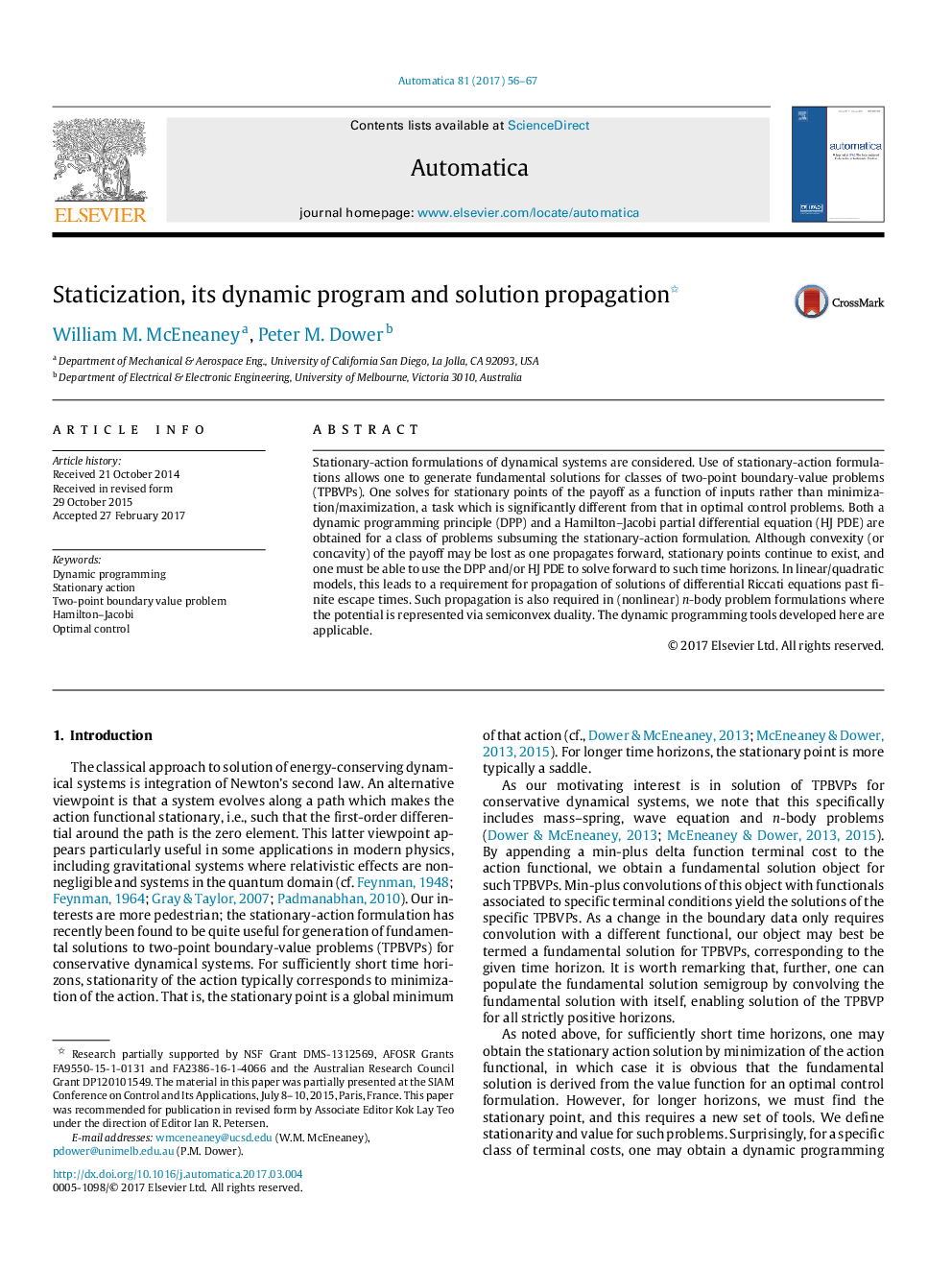| Article ID | Journal | Published Year | Pages | File Type |
|---|---|---|---|---|
| 4999775 | Automatica | 2017 | 12 Pages |
Abstract
Stationary-action formulations of dynamical systems are considered. Use of stationary-action formulations allows one to generate fundamental solutions for classes of two-point boundary-value problems (TPBVPs). One solves for stationary points of the payoff as a function of inputs rather than minimization/maximization, a task which is significantly different from that in optimal control problems. Both a dynamic programming principle (DPP) and a Hamilton-Jacobi partial differential equation (HJ PDE) are obtained for a class of problems subsuming the stationary-action formulation. Although convexity (or concavity) of the payoff may be lost as one propagates forward, stationary points continue to exist, and one must be able to use the DPP and/or HJ PDE to solve forward to such time horizons. In linear/quadratic models, this leads to a requirement for propagation of solutions of differential Riccati equations past finite escape times. Such propagation is also required in (nonlinear) n-body problem formulations where the potential is represented via semiconvex duality. The dynamic programming tools developed here are applicable.
Related Topics
Physical Sciences and Engineering
Engineering
Control and Systems Engineering
Authors
William M. McEneaney, Peter M. Dower,
